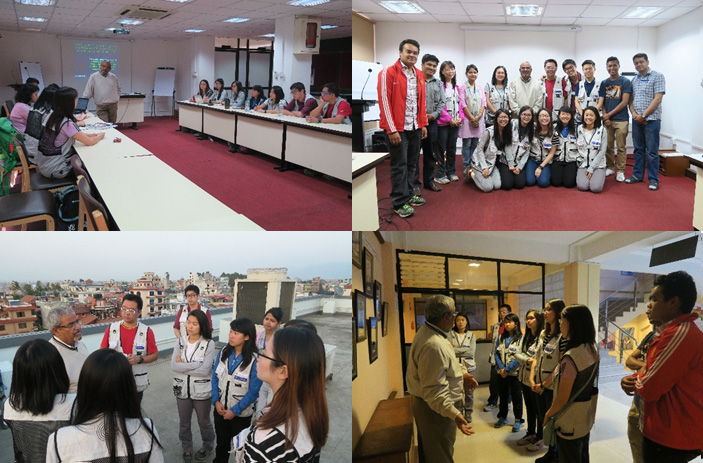The CCOUC team visited the National Society for Earthquake Technology - Nepal (NSET) on 16 April 2017. Established by engineers, NSET uses a technical approach to promote disaster risk reduction (DRR) and enhance post-disaster response capacity. NSET hosts an International Centre of Excellence (ICoE-NSET) endorsed by Integrated Research on Disaster Risk (IRDR), a sister of CCOUC’s ICoE-CCOUC in the IRDR family. IRDR is a decade-long research programme co-sponsored by the International Council for Science (ICSU), the International Social Science Council (ISSC), and the United Nations Office for Disaster Risk Reduction (UNISDR).
Dr Amod Mani Dixit, Executive Director of NSET, shared an overview of NSET’s ongoing programmes and illustrated the importance of reducing individual vulnerability as a means to improve community safety. Dr Dixit stressed the importance of designing and constructing buildings to be disaster resilient, as building collapse was the major leading cause of deaths in the 2015 Gorkha Earthquake.
The CCOUC team was also introduced to the School Earthquake Safety Programme (SESP) and Building Code Implementation Programme (BCIPN) in municipalities of Nepal. SESP focused on assessing post-disaster school buildings and retrofitting them as necessary, while also providing mason training for local craftsmen and general training for school teachers and parents. NSET’s success in striving to promote safe buildings has culminated in the mandatory regulation to incorporate disaster risk management (DRM) in Schools Improvement Plan. BCIPN worked to translate technical building issues into a social institutional issue. By involving stakeholders at every level (from local house-owners to masons and municipal engineers), compliance to building codes becomes an important means for DRR.
An interactive session followed the presentations, with Dr Dixit guiding CCOUC team to tour around the NSET headquarters. The visit was an invaluable opportunity for the team to have a deep understanding of disaster resilience from a technical engineering perspective.
